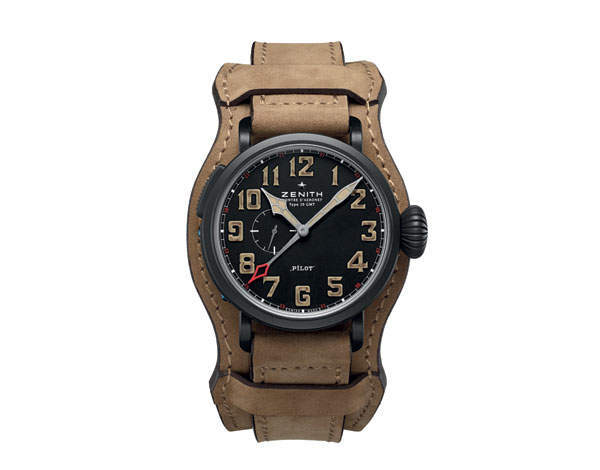

… AND THE WRIST IS HISTORY
Amid all the Cold War tensions of 1958, a remarkable piece of worldwide co-operation unfolded. International Geophysical Year was a scientific project that saw the collaborative participation of no fewer than 67 countries, including both the United States and the USSR, propelling forward the great scientific explorations of the early atomic age in areas such as seismology, geomagnetism, meteorology and solar activity.
To recognise this coming-together, the Swiss watch company Jaeger-LeCoultre produced a suitably scientific watch, which it called the Geophysic, equipped with as much cutting-edge horological tech as could be stuffed into a 35mm wristwatch. This included anti-magnetic construction, shock absorption, materials for thermal stability and magnetic resistance and a sturdy, minutely finished movement derived from JLC’s military watches.
In August that year the USS Nautilus, the world’s first nuclear-powered submarine, became the first vessel to pass from the Pacific to the Atlantic by travelling beneath the North Polar ice cap — and on the wrist of the sub’s commander was a Geophysic.
This spring Jaeger announced the revival of the Geophysic, which had become something of a holy grail among collectors: only around a thousand of the original were made. By today’s standards, the modern version bears a highly conservative design, with more of a feel of Don Draper than of uncompromising scientists and explorers.
Jaeger has further embellished the modern watch’s high-luxe credentials with platinum and pink gold versions as well as the more fitting stainless steel model, with all three produced in very limited numbers.
Tool time
Back in the 1950s, however, the Geophysic was as much instrument as apparel, and its minimalist, masculine design was in line with similar models from other brands that also reflected a fast-developing scientific and social landscape. In 1956, for instance, Rolex had released the Milgauss, which got its name from its ability to withstand magnetic forces of up to 1,000 gauss (which would normally wreak havoc on the moving parts in a watch).
The Milgauss was specifically marketed as suitable for scientists at the recently opened CERN particle physics laboratory on the Swiss-French border.
From the same era, IWC’s Ingenieur and Omega’s Railmaster were also designed for magnetic resistance and redoubtable performance, shared the same no-nonsense aesthetics and were aimed at the same audience of engineers, doctors, scientists and those who liked to associate themselves with a world of burgeoning technical possibilities.
It’s tempting to assume that watch design exists in a vacuum determined by the rarefied tastemakers of the Swiss maisons, and those very tastemakers would love us to believe that’s the case. But of course it’s not true. Look across the decades and you see watches, like cars, architecture, clothes and every other area of design, responding to the proclivities and developments of the era, just as those technical watches of the 1950s did.
Another example. In the 1970s the watch world suddenly saw a surge of eccentric shapes and designs. Brands like Omega, Heuer and Breitling adopted oversize, peculiar case shapes and muscular, sporty looks that were as much a break with the clean modernism of the 1960s as with the elegant classicism of earlier eras. These were futuristic designs born of the same era as Concorde, the space race, platform shoes and Bowie.

Pictured top: Jaeger-LeCoultre’s new Geophysic is a tribute to its 1958 classic; Above: The Zenith Pilot Montre d’Aéronef Type 20 GMT 1903, with its faded luminova, is named in honour of the wright brothers’ first flight
And it might seem strange to compare a watch with a building, but in 1972, as the Pompidou Centre in Paris proclaimed a new, industrialised, inside-out vision for architecture, the Swiss designer Gérald Genta performed a similar act with his vision for Audemars Piguet’s Royal Oak: a high-luxury watch in stainless steel (a scandalous idea then), with exposed screws dotted around an octagonal bezel on a bracelet that merged into the case. It looked like nothing that had gone before, least of all the ultra-traditional gold pieces in which Audemars specialised.
Erase and rewind
So what does the Geophysic revival tell us about our own age? The same thing, perhaps, as Omega’s revival of a classic from that early-1970s era, the Speedmaster Mark II: that right now yesterday’s aesthetic is today’s aesthetic. Nostalgia has become a defining temperament of the times, and the watch world is currently awash with it.
This was a thought particularly rammed home to me as I headed to the unveiling of the Geophysic, held in a Mayfair club that follows the current fashion for venues venerating ‘Victorian chic’. (At least it wasn’t a speakeasy.)
Watch companies aren’t just bringing back old pieces, they’re making the new versions look old as well. As well as the really rather handsome Speedmaster Mark II, Omega has brought back another late-1950s piece, the Seamaster 300, a sturdy diving watch whose luminous markings have the faded, tea-stained hue of vintage watches.
In fact, the yellowed hands of the Geophysic models draw on the same idea. Old Luminova, white when originally applied, tended to turn brownish-yellow over time, and such patination has become increasingly desirable on the vintage market. Modern Luminova doesn’t similarly decay but can be painted on in any colour you choose — and watch companies, noticing passion for all things vintage, are choosing brown.
Zenith even brought out a limited-edition aviation watch this year with numerals that looked dirty, irregularly faded and patchy — it’s like Jaguar bringing out a brand-new E-type with bits of rust cropping up on the bonnet.
One can scoff at such nakedly ersatz embellishment, but all the watches mentioned above — including even the Zenith — are perfectly handsome, beautifully made pieces, and of course the sense of history gives them character and connects them to the glory days of watches, when wearing a mechanical timepiece wasn’t an act of nostalgia.
Moreover, they benefit from the best modern manufacturing techniques — the Geophysic outperforms its forebear on every technical level, while the Seamaster contains Omega’s modern take on the antimagnetic properties of those 1950s pieces: rather than repelling 1,000 gauss, its Master Co-Axial movement uses secret materials enabling it to withstand 15,000 gauss. That means you can wear it in an MRI scanner if you so choose (you’ll likely break the scanner, though).
The nostalgia-lust started shortly after the 2008 crash, of course. Before that, in the boom years, watch design became stupidly brash, oversized and gaudy — score another point for the Zeitgeist. In the less-is-more climate of the past six years, watch designs have got smaller, more sensible and… well, older. Perhaps, though, it’s time we start looking forward again?
EXTRA TIME
London is beginning to bulge with the plushest watch shops. Richard Mille, Blancpain and IWC are among those with boutiques opening in the next few months; Patek Philippe and Breguet are doubling in size; and Harrods will be taking airport retail to another level with its Fine Watch Room in the soon-to-reopen Heathrow T2.
But the most spectacular opening will surely be the new flagship store from Watches of Switzerland, the leading top-end chain, at 155 Regent Street. Opening in late June, it promises three floors of ‘retail theatre’ and is set to be one of the biggest and most lavish horological retail spaces in Europe.
Talking of nostalgic obsessions, the thirst for vintage hasn’t passed by watch retailers either. Alongside many of the world’s most prestigious brands, the Watches of Switzerland flagship will be giving space over to vintage watches. In so doing, it follows — of all places — Harrods, which took on expertly sourced vintage pieces earlier this year.
Chopard has decided, not before time perhaps, that it’s time people started paying more attention to where their gold comes from. It’s introduced ‘fair-mined gold’ to its range, working with the Alliance for Responsible Mining (ARM) to create its ‘Green Carpet Collection’, which includes a £94,000 tourbillon made of gold extracted by small-scale mining co-operatives working under approved conditions.








